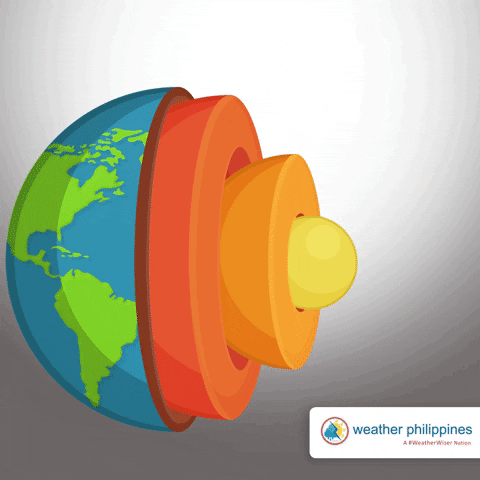Earth-Bound: What We Need To Know About Our Home Planet
By Adonis Manzan, Typhoon Specialist, WeatherPhilippines Foundation
We all know Earth to be "the third rock from the sun" and the only planet that can support life in so many shapes and sizes. But how much do we know about this special place in the universe, and how important is it to our study and understanding of weather?
Some basic facts about the Earth are that it's smaller than the planetary giants Jupiter, Saturn, Uranus, and Neptune but larger than the three other rocky planets Mercury, Mars, and Venus; its round shape has a diameter of roughly 13,000 kilometers but does have an equatorial bulge caused by both its rotation (held by the North and South poles) and its revolution. Most importantly, our planet has something very crucial in terms of survival that other heavenly bodies don't possess: water. Water plays a central role in our weather and it is fundamental to and interrelated with almost everything that has life on Earth.

Layers of the Earth
The Earth is a multi-structural system composed of three divisions that are based on their composition — core, mantle, and crust. The crust's make-up is a little less than 1%, consisting of oceanic and continental crust, which are often more felsic rock, i.e. rich in feldspar and quartz . The mantle, on the other hand, is hot and represents about 68% of the Earth’s mass. Finally, the core, which is about 31% of the Earth, is mostly made up of iron metal.
Crust and Lithosphere
The Earth’s outer surface, its crust and lithosphere, is a cold, thin, and brittle outer shell made of rock. The crust itself is very thin, relative to the radius of the planet, which is around 6,371 kilometers. There are two different types of crust, each with its own distinctive physical and chemical properties: oceanic and continental.
Oceanic crust is composed of magma that erupts on the seafloor to create basalt lava flows, or cools deeper down to create the intrusive igneous rock called gabbro. Sediments, primarily mud and the shells of tiny sea creatures, coat the seafloor.
Continental crust is made up of many different types of igneous, metamorphic, and sedimentary rocks. The average composition is granite, which is less dense than the mafic (rich in magnesium and iron) igneous rocks of the ocean crust. The crust lithosphere, which is about 100 kilometers thick, is the Earth’s outermost mechanical layer, which behaves as a brittle and rigid solid.

Mantle
The two most important things about the mantle are: (1) it is made of solid rock, and (2) it is hot. Scientists know that the mantle is made of rock based on evidence from seismic waves, heat flow, and meteorites. The properties fit the ultramafic rock peridotite, which is made of iron – and magnesium – rich silicate materials. Peridotite is rarely found on the Earth’s surface. Meanwhile, scientists know that the mantle emanates extreme heat due to its physical properties.
Core
At the planet’s center lies a dense metallic core. Scientists know that the core is metal for a few reasons. The density of the Earth’s surface layers is less than the overall density of the planet, as calculated from the planet’s rotation. Calculations indicate that the core is about 85% iron metal, with nickel-metal making up much of the remaining 15%. Also, metallic meteorites are thought to be representative of the core. If the Earth’s core were not metal, the planet would not have a magnetic field.
It is important to explore and acquire basic knowledge about the planet Earth. The more we understand about it, the better we are able to prepare for the different possible phenomena that we can experience in the environment surrounding us. After all, the ground we stand on and the air we breathe (ad\nd everything that happens in between) are connected. As we have always said in the past, it is always best to be prepared. Stay #WeatherWiser!
____________________________
References:
https://www.nationalgeographic.com/science/space/solar-system/earth/
https://courses.lumenlearning.com/geophysical/chapter/the-composition-and-structure-of-earth/

What do you think?
Responses: 0

